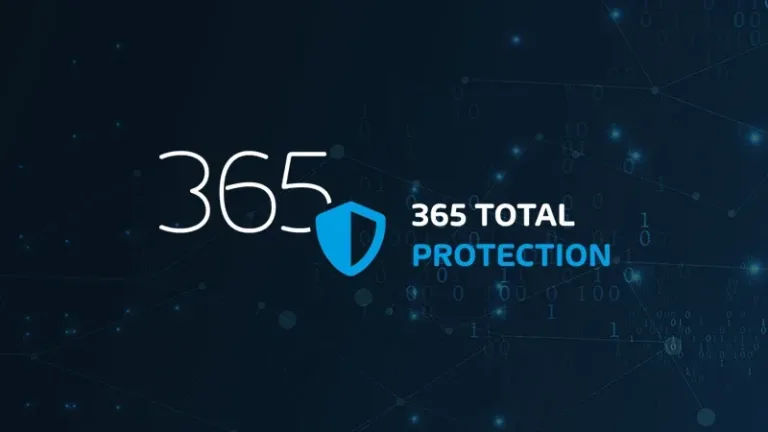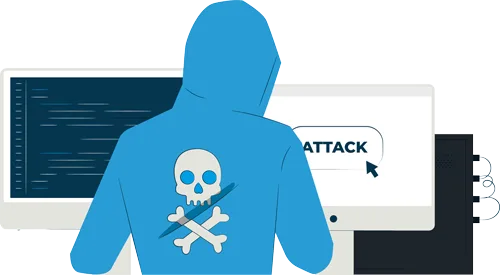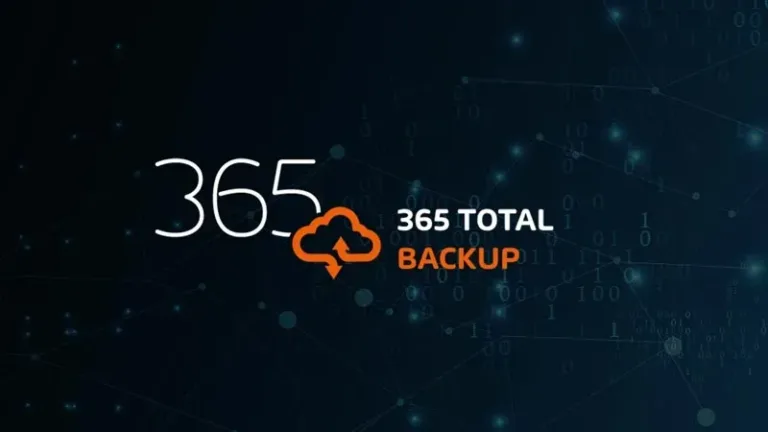

Cryptolocker Ransomware
This is how companies could protect themselves
against the cryptolocker ransomware.
In this article, we explain how CryptoLocker and similar ransomware variants work, common attack methods and why paying the ransom is never a good idea. Finally, we provide practical cybersecurity strategies to protect against ransomware attacks.
How does the cryptolocker ransomware work?
CryptoLocker is a ransomware variant and type of malware that targets Windows computers and encrypts files. Delivered via phishing emails, hackers dupe victims into downloading malicious attachments containing Trojans. As with other forms of ransomware, once an infection takes place, hackers demand a ransom in exchange for a decryption key.
The cryptolocker ransomware could enter the computers in two ways. The emails and web pages were primarily used as a gateway. The users received an infected file attachment in their electronic mailbox. This could be, for example, a compressed zip or rar file, a word document or a picture – in the form of a jpeg. The attackers disguised themselves as federal institutions, online traders, applicants or business partners.
If the cryptolocker ransomware attack was carried out through a website, the polymorphic virus would be downloaded via an update. This could happen via Java Script or Acrobat Reader. There was the possibility to become a victim of a cryptolocker ransomware attack, even if a user just followed a link to a malicious website. On that website, the download of an infected file started automatically and the malware immediately installed itself. The tricky part was that the user did not actively notice it. This meant that the local files were encrypted in the background without being detected. After this process was complete, a notice or pop-up window would appear, which would list the payment terms for the ransom.
CryptoLocker first arrived on the scene in 2013. The only option affected individuals had at that time was the payment of a ransom, in order to decrypt their data with the unique key. A deadline for the payment of the ransom was also determined.
If the deadline had expired and the ransom was still not paid, the decryption key of the cryptolocker ransomware was deleted. The data was then irrevocably encrypted. Important documents were therefore lost forever.
Although there are many ransomware variants, the two most popular are Locky and CryptoLocker. Both types of ransomware are distributed through malicious email attachments and booby-trapped URLs (also usually emailed). Once the ransomware is activated, it quickly encrypts all files it can find on the device and renders them inaccessible. With the encryption complete, hackers request ransom payments for the files to be unencrypted. If victims refuse to pay the ransom or let the deadline pass, many cybercriminals threaten to delete the decryption key or raise the ransom significantly.
Why you should not pay the ransom
The problem was that the victims of the cryptolocker ransomware were often denied access to their files even after paying the ransom money. For this reason, authorities and IT experts generally advise against paying a ransom to the cyber criminals. Also, the attackers will use the money to develop new threats and attacks with the ransom money.
How a cryptolocker ransomware attack could have been prevented
For an effective protection against the Cryptolocker ransomware, you will now find a list of useful tips. The following preventive measures would have been recommended during an attack by the cryptolocker ransomware and are still valid with regard to any ransomware attack.
[Related]: Find out how Businesses are impacted by Ransomware in our latest Ransomware Report.
3 ways to protect yourself against crypto ransomware
Backups
Businesses should always take care to secure their data at regular intervals. Short backup intervals are therefore reasonable. The time intervals between the backups should be limited to only a few days. Having access to a backup, the victims of the cryptolocker ransomware would have been able to access their backups and restore their data without major losses.
However, it should be noted that during this process the backups should be saved to a physically independent drive and ideally with a versioning feature. For example, a USB hard disk would not have been sufficient.
Updates
Not only in relation to cryptolocker, but also other ransomware versions, the following recommendations still apply: Keep your systems of your company always up-to-date. This applies to updates of your operating system as well as to your security software. Talk to your provider regularly about new updates. Most software vendors publish their updates on a special website or inform their customers directly about the application or via email about updates.
Hornetsecurity Advanced Threat Protection (ATP)
Hornetsecurity Advanced Threat Protection (ATP) provides you with a comprehensive IT security concept that detects and protects from complex attacks such as CEO fraud, spear phishing, whaling and also ransomware. As soon as a malicious email is on its way to the recipient, Hornetsecurity ATP will detect it and prevents the delivery. Additionally, you will receive detailed information about the attack on your company.
Your organization needs advanced ransomware protection that can detect new variants of ransomware.
Vade’s advanced email protection solution uses artificial intelligence for effective protection against ransomware, spear phishing, and zero-day attacks. Our multi-layered approach ensures protection by keeping dangerous emails away from employee inboxes.
Our solution uses:
- Technical analysis
- Fingerprint analysis
- Behavioral analysis
- Comprehensive file analysis

Ransomware Impact Report 2025
Ransomware attacks are increasing for the first time in 3 years, reaffirming its status as one of the most persistent threats to businesses in 2025.
Find out how organizations are adapting, what emerging trends are, and where new risks lie.
How Hornetsecurity Protects you against the cryptolocker ransomware
As the last few years have shown, the area of cybercriminality should not be underestimated, especially in the case of blackmail trojan virus. In order to discover these complex attacks, Hornetsecurity Advanced Threat Protection (ATP) relies on a sandbox analysis engine, amongst others.
In practice this means the following: As soon as the user wants to open an email attachment, the attached file is carefully opened and analyzed in a protected system environment. If it actually happens to be a positive malware attachment, the delivery of the email is prevented.
Another recognition method used is freezing, which holds suspicious emails back or “freezes” them. Once the signatures for the scanning filters have been updated, a new scan of the retained file is performed. This ensures that the cryptolocker ransomware would not have had a chance to enter the companies’ systems.
CEO Fraud, Whaling and Phishing
The intention of many attackers is to get their hands on personal data, such as credit card information and logging data (whaling and phishing). From a financial point of view, these kind of cyber attacks are also very rewarding for the perpetrators. For example, CEO fraud tries to persuade employees under false pretenses to transfer funds, for example to offshore accounts.
There have already been cases where companies were scammed for several million dollars. Employee-related terminations are not a rarity in this context. Hornetsecuritys Advanced Threat Protection (ATP) provides a sustainable solution for enterprises where traditional IT security mechanisms fail. The analysis of a certain internal corporate communication structure reveals irregularities and prevents them through identity spoofing.
Blended Attacks
With Advanced Threat Protection (ATP), Hornetsecurity reliably secures your company against blended attacks. In this type of attack, cyber criminals use several vectors. PDF files or Office documents that are attached to an email and contain links to drive-by downloads are very popular with attackers.
Hornetsecurity’s Advanced Threat Protection (ATP) uses the following tools against blended attacks: URL scanning, URL rewriting, sandboxing, and freezing. With these features, your company is reliably protected.
Real-time alerts and employee awareness
As soon as Hornetsecurity Advanced Threat Protection (ATP) detects an attack, the user will receive a real-time alert about suspicious digital activities, which will allow companies to react quickly. This applies both to the initiation of internal company measures as well as legal measures. The user interface of the analysis engine allows companies to receive detailed information on individual attacks.
Once a threat has been identified, the communications chain within the company can be used to inform other employees about incidents. Awareness raising among employees prevents, for example, the use of further attack vectors such as telephone lines.
Ex Post Analysis via Hornetsecurity Advanced Threat Protection (ATP)
The analysis not only takes place in real-time, but also after the attack. This way, emails, which were initially classified as safe, can be classified by the so-called “ex post alarm” as a threat at a later date. The chief information security officer of the companies has the opportunity to carry out a further detailed analysis, which significantly prevents the spreading of the attack.
The Targeted Fraud Forensic Engine
The Targeted Fraud Forensics consists of several recognition automatisms. They analyze malicious emails that cannot be recognized through a link or an attachment. In addition to the recognition of certain malicious patterns by the Intention Recognition System, Targeted Fraud Forensics also uses Feign Facts Identification. The mechanism recognizes false or manipulated notifications. If you would like to receive more information, then click here. There you will also get more detailed information about CryptoLocker ransomware.
Learn about HORNETSECURITY’S SERVICES
Interested in Related Topics?
Did you like our contribution to cryptolocker ransomware? Then other articles in our knowledge base might interest you as well! We help you learn more about cybersecurity related topics such as Emotet, Trojans, IT Security, Cryptolocker Ransomware, Phishing, GoBD, Cyber Kill Chain and Computer Worms.



